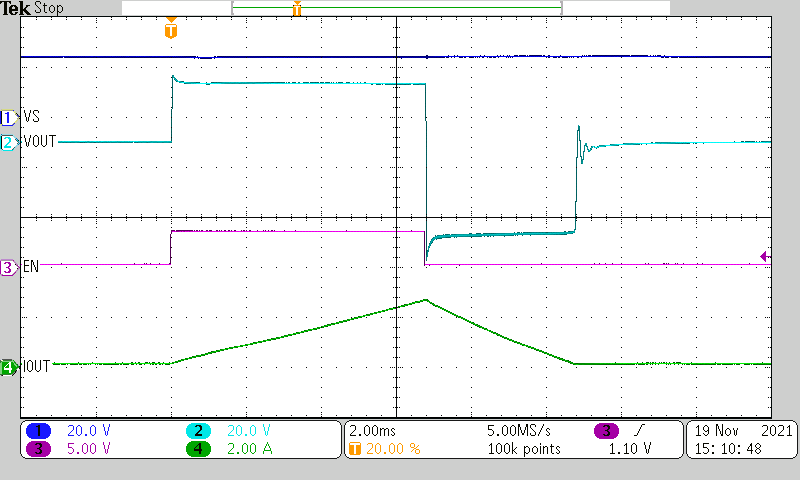ZHCSM06C december 2020 – may 2023 TPS272C45
PRODUCTION DATA
- 1
- 1 特性
- 2 应用
- 3 说明
- 4 Revision History
- 5 Device Comparison Table
- 6 Pin Configuration and Functions
- 7 Specifications
- 8 Parameter Measurement Information
-
9 Detailed Description
- 9.1 Overview
- 9.2 Functional Block Diagram
- 9.3
Feature Description
- 9.3.1 Programmable Current Limit
- 9.3.2 Low Power Dissipation
- 9.3.3 Protection Mechanisms
- 9.3.4 Diagnostic Mechanisms
- 9.4 Device Functional Modes
- 10Application and Implementation
- 11Device and Documentation Support
- 12Mechanical, Packaging, and Orderable Information
9.3.3.2 Inductive Load Demagnetization
When switching off an inductive load, the inductor can impose a negative voltage on the output of the switch. The TPS272C45 includes voltage clamps between VS and VOUT to limit the voltage across the FETs and demagnetize load inductance if there is any. The negative voltage applied at the OUT pin drives the discharge of inductor current. Figure 9-10 shows the device discharging a 40-mH load.
 Figure 9-10 TPS272C45 Inductive Discharge (40 mH)
Figure 9-10 TPS272C45 Inductive Discharge (40 mH) Figure 9-11 TPS272C45 Inductive Load Discharge Energy Capability at 125°C
Figure 9-11 TPS272C45 Inductive Load Discharge Energy Capability at 125°CFor more information on driving inductive loads, refer to TI's How to Drive Inductive, Capacitive, and Lighting Loads With Smart High-Side Switches application report.